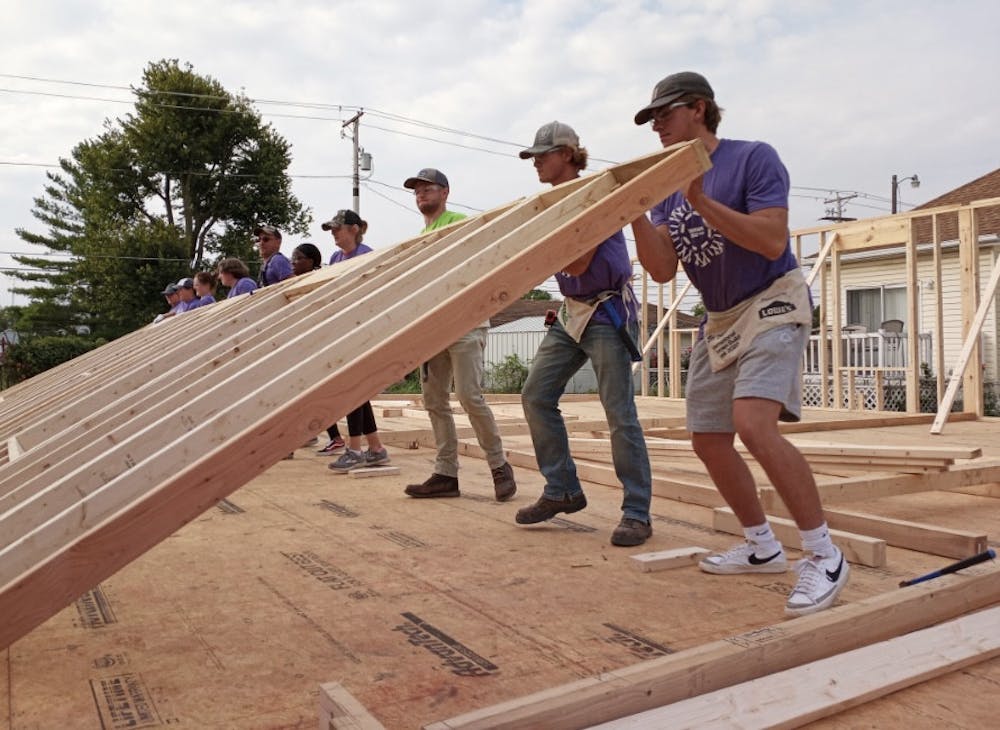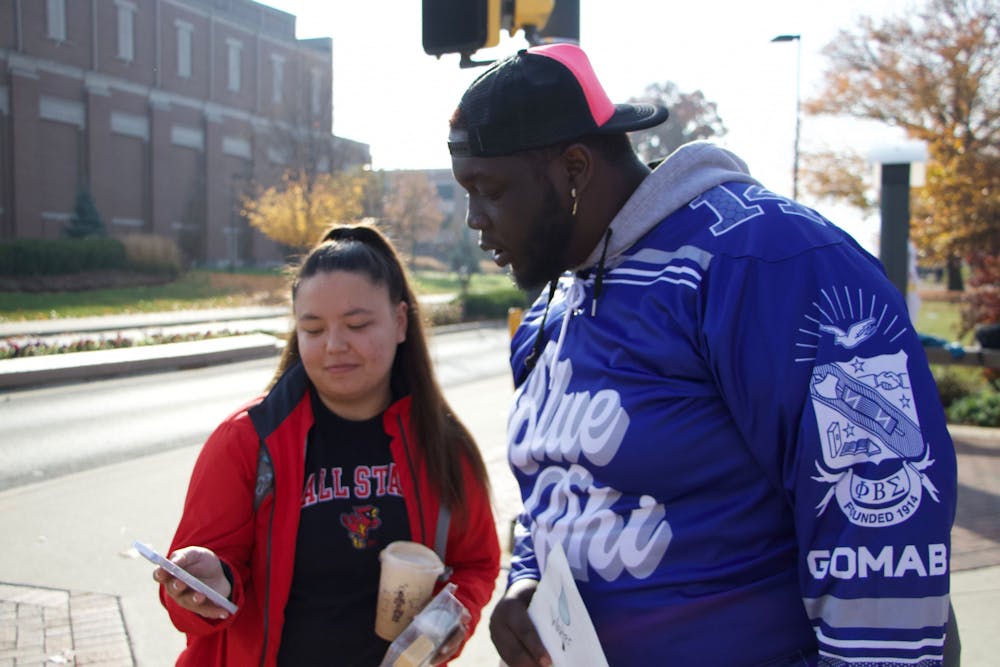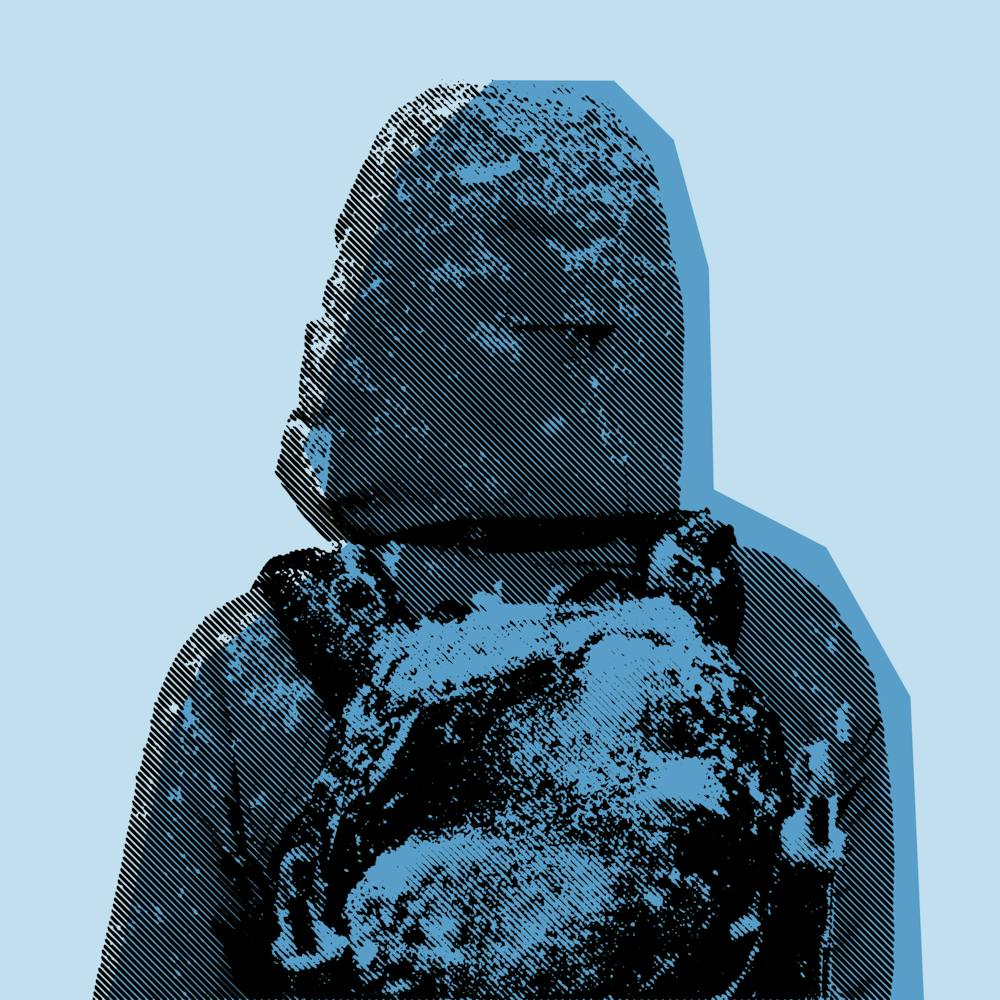On a cold and windy early December afternoon in Muncie, Indiana, a cluster of people wearing as much clothing as they can loiter around the entrance of the Muncie HUB. Some have open suitcases with clothes and belongings, while others have speakers playing music.
These people can’t enter the HUB, as the building is open from 8 a.m.-noon and 1-5 p.m. Monday to Friday, and during the one-hour period dedicated to cleaning and setup in between, no one seeking help can be in the building. Nevertheless, they wait outside because they have nowhere else to go.
According to the National Alliance to End Homelessness, approximately 5,625 people were “homeless on a given night” in Indiana as of 2020.
The Muncie HUB is for more extreme cases of homelessness. It gives those on the street a restroom, a phone charging station and a place to hang out during the day. Muncie Mission, along with numerous other local organizations, helps run Muncie HUB and additionally offers more advanced resources, such as overnight shelter, food and an addiction program. Their main building acts as a warming station, as well.
Although there are five or six warming stations in the Muncie area, Muncie Mission is the only 24-hour service, so those who wouldn’t be able to sleep in the beds provided can come and sit in the lobby, warm up with hot chocolate or coffee, charge their phone if need be, etc.
Bob Scott, vice president of development at Muncie Mission, said the Mission’s highest bed count is normally in December, January and February, as many people need a place to stay during the coldest months of the year.
Even Phi Beta Sigma, a fraternity at Ball State, recognizes the struggles the at-risk community goes through in the winter. Through their annual signature event, “Sigma Sleepout for the Homeless,” the fraternity camps out at a corner of the Scramble Light for a full 24 hours.
While those at this event have a tent, multiple donation boxes, a speaker, a firepit and much more to help them through their 25 hours outside (7 a.m. until 8:30 a.m. the next day), Jiale Ritter, a fourth-year natural resources and environmental management major at Ball State and Phi Beta Sigma Community Service Chairman, knows many members of the at-risk community may not have access to these things.
“Last year, it was raining when we were doing it, so we had to sleep out here in the rain, and it was freezing. It was cold, and my eyes opened a little bit more to realize that this is what people deal with every day,” Ritter said. “They don't have the resources to be able to be like, ‘I'm just going to go home,’ or ‘I'm just going to get a hotel room.’”
Not only is cold, hazardous weather tough on the at-risk community, but Scott said November and December are especially hard mentally for the homeless.
“The holidays add depression for people that are missing somebody in their life, for people [who] aren't where they expected they would be,” Scott said. “That's a real struggle. The good thing is that the holidays really bring out people [who] have compassion.”

Leigh Edwards, director of community engagement for Muncie Mission, said the shelter provided 700-900 meals to those in need on Thanksgiving, including over 400 delivered. The weekend before Christmas, Edwards said the Mission served approximately 600 meals.
However, she said it’s sad how many people signed up for the meals because it means they were likely spending the holiday alone.
“The guys that we spend time with that end up with the Mission oftentimes have burned every bridge to healthy relationships and things like that that you can imagine,” Edwards said. “When you walk in the doors of Muncie Mission, you're in an active crisis. Our goal is to move them from that place to being in a place where they're actively showing that they're happy and that they've found purpose and that they can take care of themselves.”
The United States Interagency Council on Homelessness launched a Federal Strategic Plan to Prevent and End Homelessness in 2010, initially reporting a 10 percent drop in homelessness in the country. However, according to their website, homelessness has begun to rise again since 2016.
“In 2020, for the first time since the U.S. started collecting this data, more individuals experiencing homelessness were living on the streets and in cars than in shelters or other temporary housing, and there was an increase in the number of unsheltered families with children,” the website read.
As it pertains to Indiana, the National Alliance to End Homelessness’ website shows the rate of homelessness in the state has gone down as of late, with the rate in 2007 being 11.6, as compared to the 2020 rate of 8.4. However, those involved with Muncie organizations to help the homeless and at-risk community want to see this number continue to shrink.
“There's definitely a need for more understanding for people that need help in our community,” Eileen Molter, director of resource development for Muncie Habitat for Humanity, said. “A lot of these people are doing the best that they can, and all they need is a hand up and then they can stand on their own two feet.”

While Molter said Habitat is not an emergency housing service, those who work for or volunteer with the nonprofit organization are involved in the process of building new housing for those who currently pay more than 30 percent of their income on housing, making it harder for them to buy groceries, take care of their families, etc.
Twice a year, Habitat sends out applications to the community for those who need assistance. In the latest process, Habitat sent out 200 applications and received 60 back, both being the highest marks ever.
Although only four or five of those applicants will get into Habitat’s home ownership program, Molter said the increased number of applications around the community is a positive because it means more at-risk people are ready to take the next step and ask for help. Molter has been with Habitat for three years, and she said since the COVID-19 pandemic, Habitat has helped 37 families with house repairs or new housing.
Molter said through her brief time at Habitat, her eyes have been opened to the large need even in a community like Muncie.
“It's easy for us to stay in our bubbles,” Molter said. “It can make us uncomfortable to think about other people that are living differently than us, but I think when we take the time to get to know our neighbor, we'll find that we have a lot more in common than we have differences.”
Molter told a story about someone who has successfully gone through their home ownership program, who had never had a credit card, a driver’s license or owned a house before starting. Now, she works for Habitat.
Like Molter, Edwards said before taking the job at Muncie Mission, she was largely unaware of the size of the homeless and at-risk community in Muncie. She said through working at the Mission, she realized much of the community is in the same boat as she was.
Jalen Jones, a fourth-year business marketing major at Ball State and vice president for Phi Beta Sigma, agreed with Molter. He said through “Sigma Sleepout for the Homeless,” those in the fraternity want to make an impact on the community and create change while raising awareness.
“A lot of times, I feel like we don't take the time to appreciate the little things, and for some people, those little things are everything,” Jones said. “So being able to do those little things truly can make someone's day [and] can make a huge impact.”
Edwards, who volunteered at the Mission for eight years before taking the position she currently holds as of three months ago, feels impact is being realized at the Mission.
“I think at the core of it, that holistic concept where we are walking with them every day and seeing them as people first, and then helping them to know that there is an answer, that there are solutions and that there is a path for them, has really been impactful,” Edwards said.
Kristin Freehill, volunteer coordinator for Habitat for Humanity, said volunteer numbers in 2022 are up 45 percent from 2021, highlighting the increased support from the community. She is from Muncie and summed up the city’s willingness to support with one word: “grit,” tracing it back to the manufacturing roots of the city.
“I think we've seen the effects of collective impact and collaborative work in the nonprofit space and serving the community,” Freehill said. “No matter how many organizations we have doing that work, it's never enough to really serve the community's needs. There's always a need there.”
Jared Martin, a fourth-year social work major at Ball State in his third year with Phi Beta Sigma, said during his time involved with the fraternity, he has been able to see reactions from those being served by Muncie Mission and other organizations they donate the money and resources from this event to. He said these organizations especially don’t expect to get so much support from students.
“It's very humbling because it teaches you to have empathy for those people, so that makes you grind to make sure that you're raising the money, so that we can give it to those people,” Martin said. “... I've seen people cry. It’s complete gratitude.”

Scott has been around the Muncie area almost his whole life, other than a college education in Lafayette at Purdue University and a 10-year stay in Illinois. Since taking his position at the Mission in 2019, Scott has seen his perspective change like Edwards, Molter and Ritter. That said, he has seen opioid and drug addiction be the source of many members of the at-risk communities problems.
“There are people that, I think, if they were able to be sober [and] clean for a little while, … they can hold down jobs, and there's jobs to be had, and they're needed in the workforce,” Scott said. “All of the components are there, but they have to want to live that kind of lifestyle instead of an addictive lifestyle, and addiction holds you. That's the power of it, even though you might know there's a better path for you over here or a different path for you, you can't pull yourself away.”
While the Muncie Mission used to just be an emergency service for at-risk men, a place where they could find shelter and something to eat, now the Mission has a 12-step addiction program. Since the program began six years ago, none of the men who have recovered and are in transitional housing have relapsed and fallen back into addiction.
While this addiction program has reaped many benefits for those who are in successful recovery, there are many challenges that come with it. Scott said residents who consistently stay who have COVID-19 present a problem, though one they try to address as best they can by following COVID-19 protocols. That said, the Mission does offer a free health clinic.
Additionally, Scott said sometimes people come into the Mission off the street smelling like alcohol, marijuana, etc., and these people can’t be around those going through the addiction program, due to risk of setback.
Outside of the addiction program, Scott mentioned a few other things Muncie doesn’t have the resources to help with, including couples who are homeless, as most shelters/organizations are men’s or women’s only, and those at-risk with pets, because oftentimes organizations can’t take care of animals. However, to address other needs that are tough to meet, a 24-hour crisis center is being developed as a part of IU Health at Ball Memorial Hospital. Scott said this should help more with those members of the at-risk community who may be at risk of harming others, etc.
Scott said people from other communities come to the Mission seeking help because surrounding areas may not have as adequate of a support system. He feels the Mission, along with other local organizations, make Muncie a notable destination for those in the at-risk or homeless community seeking help.
“There are places to get help, there are places to get food, there are places to get clothing [and] places to get shelter,” Scott said. “This safety net of support, I feel like it's pretty robust in our community.”
Contact Kyle Smedley with comments via email at kyle.smedley@bsu.edu or on Twitter @smedley1932.





